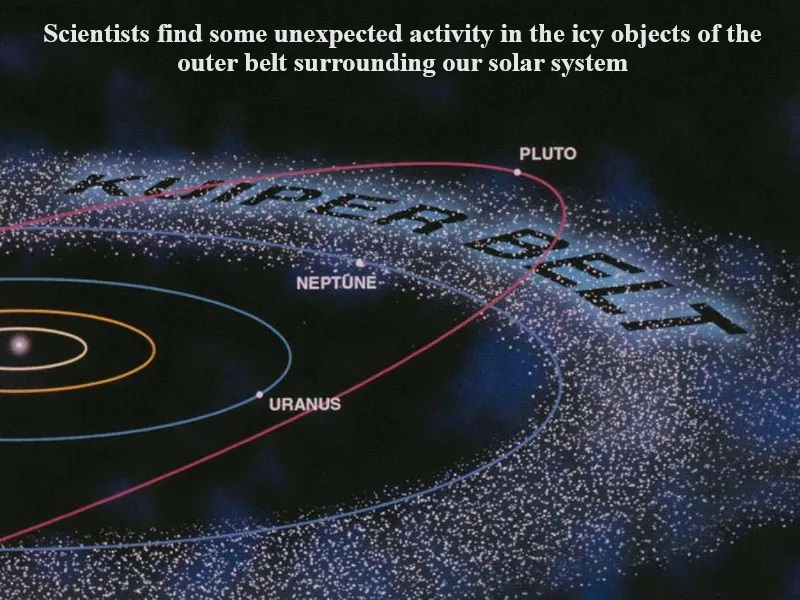
Researchers have made an intriguing discovery concerning the icy bodies residing in the outer region of our solar system, known as the Kuiper Belt.
The Kuiper Belt, a distant and doughnut-shaped area surrounding much of our solar system, is home to icy celestial bodies such as Pluto, classified as a dwarf planet. While this region remains relatively unexplored, scientists believe it harbors millions of inactive objects.
Employing the James Webb Space Telescope, astronomers have observed some of these icy objects, revealing unexpected activity. The telescope, positioned one million miles from Earth, was directed toward Eris and Makemake, the two largest-known entities within the Kuiper Belt. Equipped with specialized cameras capable of detecting various elements or molecules in distant worlds, the telescope provided valuable insights.
As detailed in a study published in the planetary science journal Icarus, the icy orbs and objects within the Kuiper Belt are considered preserved relics from the early stages of the solar system. However, the presence of frozen methane identified on the surfaces of Eris and Makemake suggests a recent alteration. This discovery implies the existence of hot interiors beneath the icy exteriors, capable of pushing liquid or gas onto the surface. The relatively recent deposition of methane indicates the potential for these icy worlds to harbor oceans, akin to Jupiter’s moon Europa.
“We see some interesting signs of hot times in cool places,” remarked Christopher Glein, a scientist at the Southwest Research Institute, who spearheaded the investigation into the Kuiper Belt objects. Drawing from his prior research on Enceladus, Saturn’s moon known for its geysers, Glein suggested that hot cores could serve as sources of liquid water beneath the icy surfaces of these distant celestial bodies.
While scientists speculate that some of these frozen worlds, located billions of miles away, may possess conditions conducive to life, no definitive evidence has been found to support this notion.

Post Your Comments